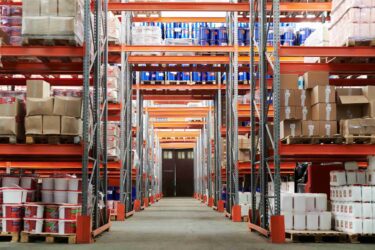
Contents
- The Importance of Collaboration
- How to Foster Collaboration
- Working with Industry Associations
- Contact Us
Share this article
Supply Chain sustainability is inherently challenging, largely stemming from a lack of capacity, resources, and visibility. In fact, the greatest hurdles companies face when it comes to complying with due diligence regulations, developing responsible sourcing programs, and managing scope 3 emissions are often:
- A lack of supply chain visibility, typically resulting from complex supply chains or gaps in necessary data.
- Supply chain volatility and unplanned variation in upstream and downstream material flow.
- Low supplier leverage, as diverse priorities and cultural barriers can lead to challenges when creating new ways of working.
- The initial investment in supply chain sustainability and associated impacts on pricing.
- Varied regulations and a lack of harmonisation across regulations and standards.
- Inadequate technological capabilities.
Overcoming these challenges requires a combination of strategic planning, investment in technology and expertise, effective communication and cooperation with stakeholders, and a commitment to transparency and continuous improvement. Most importantly, though, it requires collaboration.
Collaboration is key to a successful supply chain sustainability program because it creates a foundation on which to break down and eliminate these main challenges.
Why Is Collaboration Central to Supply Chain Sustainability?
- Complexity & Interdependence: Supply chains are inherently complex and involve multiple stakeholders, including suppliers, manufacturers, distributors, retailers, and consumers. Each of these players affects and is affected by one another. Collaboration thus ensures that all parties work towards shared sustainability goals, understanding that the actions of one can have significant downstream and upstream impacts.
- Shared Knowledge & Innovation: Collaborative efforts allow supply chain partners to share best practices, technological advancements, and innovative solutions. This exchange of knowledge can lead to the development of more sustainable practices and products, helping all participants improve their environmental and social footprints.
- Risk Management: Sustainability issues, such as resource scarcity, climate change, and regulatory shifts, present risks that no single organisation can manage alone. Collaborative efforts help identify and mitigate these risks through collective problem-solving, ensuring that all parties are better prepared for potential disruptions.
- Transparency & Accountability: Collaboration fosters transparency across the supply chain, enabling companies to better understand the origins and impacts of their materials and products. It also holds all stakeholders accountable for their sustainability performance, driving continuous improvement and trust among partners.
- Leveraging Scale and Influence: By working together, companies can leverage their collective scale and influence to drive sustainability initiatives that might be unattainable individually. For example, multiple companies can collaborate to develop sustainable sourcing standards or invest in renewable energy projects, amplifying their impact.
- Building Resilience: Collaborative supply chains are more resilient to disruptions, whether they are due to environmental disasters, social unrest, or other unforeseen events. By working together, companies can create contingency plans, share resources, and support each other in times of crisis, ensuring the sustainability of the supply chain in the long term.
How to Foster Collaboration to Achieve Supply Chain Sustainability
There are several approaches to fostering and maintaining collaboration across supply chains. Typically, collaboration efforts are shaped by those involved.
Collaborating with Internal Stakeholders
Involving internal stakeholders in supply chain sustainability programs is necessary for garnering alignment across your organisation. Starting at the top with key stakeholders can often help bolster support for the initiative.
When engaging with stakeholders, it is important for everyone involved to understand why supply chain sustainability matters to them and to the company, and how their role will support success. This helps to ensure alignment on goals and KPIs.
Here is a great example of how companies that have aligned their sustainability goals with their core values are beginning to examine their relationships with industry associations: Unilever calls on industry associations to step up climate efforts.
Engaging Suppliers
Unsurprisingly, suppliers are a vital part of any supply chain sustainability program. However, engaging with suppliers does more than just drive sustainability: it also creates trust which in turn encourages transparency, a core component to supply chain visibility.
Working with Coalitions and Industry Associations
Coalitions and Industry Associations can help offer key insights and in-depth knowledge and expertise on both sector-related trends and sustainable development. Collaborating with associations focused on sustainability and supply chains can therefore be a great resource and an important driver for innovation.
“For real change to take root and nurture, working together is not just important, it is imperative.”
World Economic Forum
Industry Associations can also play a critical role in engaging vital stakeholders and suppliers, and are uniquely positioned to leverage relationships and innovative outside of the box strategies. Additionally, they can guide the development of initiatives and facilitate collaboration among firms interested in driving change.
For example, The Outdoor Industry Association (OIA) brought together drinkware brands for a carbon emissions reduction initiative in the drinkware supply chain. The primary objective was to influence shared third-party suppliers to achieve 100% renewable electricity and facility emission reduction. The initiative was successful and further initiatives are being explored.
We are also beginning to see a shift towards more innovative methods of collaboration such as the development of industry pivot funds to tackle systemic challenges. These funds can accelerate and scale the transitions we need while diversifying investment portfolios for individual organisations; as well as, often being able to access additional capital through impact investors.
In this way, leveraging associations and collaborating with both peers and competitors drives transformational, industry-wide change.
Assessing the Value of Coalitions and Industry Associations
However, many companies still struggle with how to effectively leverage associations to help launch supply chain sustainability initiatives. When considering the applicability engaging an industry association for new initiative reflect on the following questions:
- Which industry associations are we currently members of, and what is our level of engagement with them? Are the capabilities they offer aligned with our sustainability objectives?
- Who are the internal and external stakeholders that should be involved in a sustainable supply chain initiative?
- How are we currently collaborating and innovating with peers in the industry and other firms that share our supply chains? Are there opportunities to bridge any gaps and engage with these firms on sustainable initiatives?
Anthesis supports clients in maximising engagement across the supply chain – including by leveraging Industry Associations, building supply chain collaborations and establishing industry pivot funds.
We are the world’s leading purpose driven, digitally enabled, science-based activator. And always welcome inquiries and partnerships to drive positive change together.









